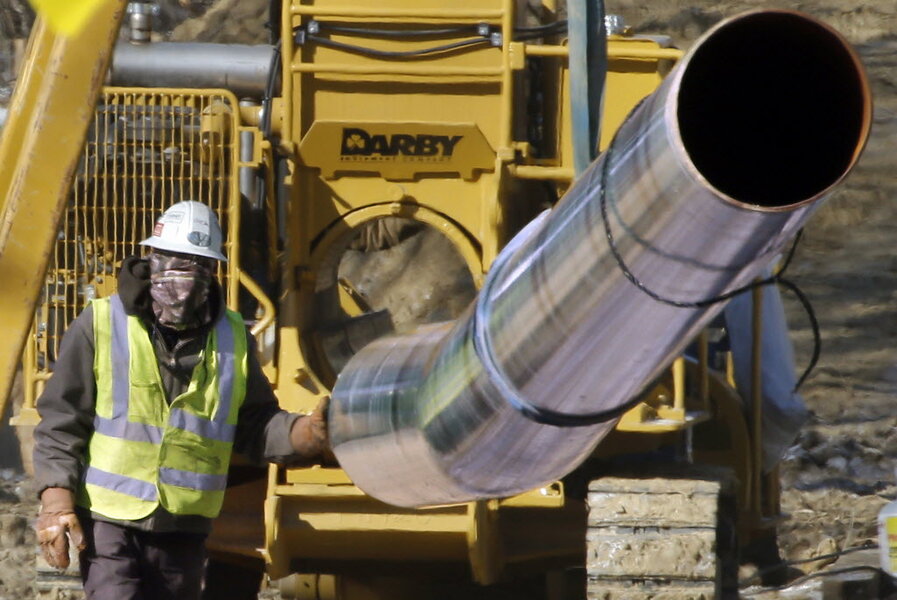What the oil and gas industry isn't telling investors
Loading...
Oil prices crashed because of too much supply, but will rebound as production shrinks and demand rises. But what if long-term demand for oil ends up being sharply lower than what the oil industry believes?
That is the subject of a new report from The Carbon Tracker Initiative, which looks at a range of scenarios that could blow up oil industry projections for long-term oil demand.
Historically, Carbon Tracker says, energy demand has been driven by population, economic growth, and the efficiency (or inefficiency) of energy-using technologies. Carbon Tracker looks at a couple possible future scenarios in which those parameters are altered, resulting in dramatically lower rates of oil consumption.
Carbon Tracker has been a pioneer in the concept of “stranded assets,” the notion that fossil fuel assets will lose their value as the world moves to restrict carbon emissions. If an oil field cannot be produced profitably in a carbon-constrained world – or cannot legally be produced because of certain regulations – then it ceases to have value. That puts investors’ dollars at risk, a risk that financial markets have not fully grappled with.
However, in a new report, Carbon Tracker expands upon the possible scenarios in which oil demand may not live up to industry predictions.
For example, if the world population hits only 8.3 billion by 2050 instead of the 9.7 billion figure typically cited by the UN, fossil fuel consumption could end up being 17 percent lower in 2050 than the oil industry thinks. Coal would be affected the most, with 25 percent reduction in demand compared to the business-as-usual case.
How about GDP growth? The expansion of the global economy is pivotal to energy consumption. The industry typically bakes in a GDP growth rate of 2.8 to 3.6 percent per year into its forecasts. But these figures could be on the high end, especially since so much hinges on the ongoing blistering growth from China. But, using BP’s pessimistic GDP scenario in which China and India only grow at 4 percent per year, global energy demand could be 8.5 percent lower in 2035 than the business-as-usual case.
Perhaps more threatening to future oil demand are global policies to ratchet down greenhouse gas emissions, as previously touched upon. Although international negotiations have largely failed to halt the growth of carbon emissions, a significant effort to zero out carbon over the long-term would necessarily cut deeply into demand. Industry projections largely ignore this possibility, as industry estimates for fossil fuel demand in the future would likely lead to average global warming of 4 to 6 degrees Celsius, exceeding the stated goal of capping warming at 2 degrees. More importantly, industry projections for fossil fuel use already exceed the totals that would result if the carbon reduction goals already laid out by countries heading into Paris are implemented. Caps on emissions would upend the entire business model of the oil industry.
Carbon Tracker looks at a few other scenarios, including the possibility that renewable energy could make cost reductions and deployment much greater than the oil industry thinks. Indeed, energy prognosticators like the IEA consistently underestimate the market penetration of solar PV and wind. Actual deployment wildly exceeds every projection that the IEA publishes. It is not hard to see oil industry projections off the mark, undone by falling costs and rapid deployment of solar and wind.
Moreover, the combination of energy storage and renewable energy could transform power markets, solving the problem of intermittent energy. Battery storage continues to get cheaper, another trend that the oil industry could be underestimating. Electricity market transformation would also help scale up battery manufacturing, which in turn would reduce the cost of electric vehicles.
Take Toyota’s recent announcement that it will target a 90 percent reduction in greenhouse gas emissions from its vehicles by 2050 by developing fuel cell vehicles. There is a long way to go before such a scenario becomes viable, but the announcement should is a shot across the bow for the oil industry.
In short, Carbon Tracker concludes, there are very real threats to the business models of oil companies, threats that need to be explained to investors. Right now, those threats are not being taken seriously.
Source: http://oilprice.com
Original article: http://oilprice.com/Energy/Energy-General/What-The-Oil-And-Gas-Industry-Is-Not-Telling-Investors.html





